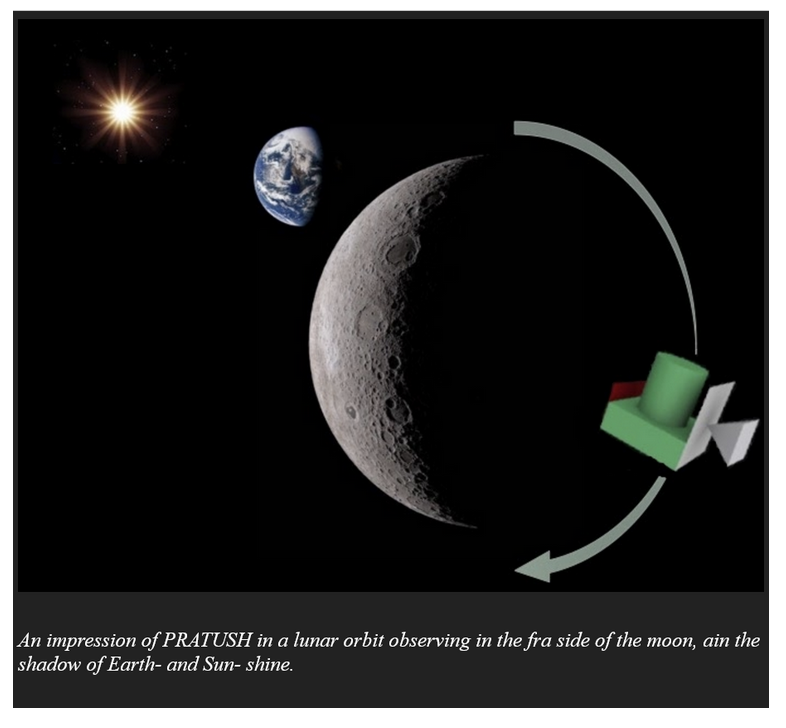Context:
Astronomers around the world are looking forward to setting up high-resolution telescopes on the moon and in its orbit.
Need for placing telescopes on/around the Moon
- Optical telescopes on Earth gather visible light while radio telescopes capture radio waves however both types of telescopes face challenges due to the Earth’s atmosphere.
- Optical instruments struggle to see clearly through polluted skies while radio telescopes must contend with interference from various sources such as radio and TV signals along with electromagnetic noise from radar systems, aircraft, and satellites.
- Additionally, the Earth’s ionosphere acts as a barrier obstructing radio waves from outer space.
- Also, Radio telescopes into space around Earth made things worse because these telescopes started picking up radio signals from all over Earth as well as signals from space.
- So, astronomers are now thinking seriously about an idea they have had since the 1950s putting telescopes, both optical and radio, on the side of the moon that always faces away from Earth.
- The moon’s clean, airless environment gives optical telescopes clear views during the long lunar night which lasts for two weeks at a time.
- And if radio telescopes are placed on the far side of the moon, they will be protected by the moon itself which blocks radio signals from Earth and electrically charged winds from the Sun.
About PRATUSH radio telescope
- Indian scientists are planning to utilize the radio telescope PRATUSH (Probing Reionization of the Universe using Signal from Hydrogen) by placing it on the far side of the moon.
- It is being developed by the Raman Research Institute (RRI) in Bengaluru with active collaboration from the Indian Space Research Organisation (ISRO).
- PRATUSH will initially be launched into Earth’s orbit by ISRO after some fine-tuning ISRO will then send it moonwards.
- Once in lunar orbit, PRATUSH will benefit from ideal observing conditions operating in free space with minimal RFI (radio frequency interference) and no ionosphere.
- It is equipped with a wideband frequency-independent antenna, a self-calibrating analog receiver, and a digital correlator to capture radio noise and important signals from the Dark Ages.
About Dark Ages
- The “cosmic dark ages” refers to a period during the early universe when sources of light were cloaked in a dense fog of neutral hydrogen gas.
- Through a combination of simulations and observations, astrophysicists have estimated that the cosmic dark ages began 380,000 years after the Big Bang.
- This dense fog of neutral hydrogen gas began to banish only after enough stars were born.
- The ultraviolet light produced by these stars eventually ionized all of the neutral hydrogen in interstellar space, thus allowing photons to travel freely in all directions across the universe.
- This process gradually brought an end to the cosmic dark ages.
Initiatives of Other Countries on Similar Projects
- A collaborative project between NASA and Berkeley Lab “Lunar Surface Electromagnetic Experiment”, also known as LuSEE Night is set to launched in December 2025.
- NASA’s Long-Baseline Optical Imaging Interferometer is slated for launch in parts before the end of this decade. Once assembled on the moon’s far side, it will observe magnetic activity on stars and the centres of active galaxies in visible and ultraviolet wavelengths.
- The European Space Agency (ESA) is preparing to send a radio telescope to the moon’s far side aboard its lunar lander, ‘Argonaut’, by 2030.
- Other European projects are also in the pipeline including super-sensitive detectors to search for gravitational waves and an infrared telescope located within a permanently shadowed crater near the lunar south pole.
- However, China may take the lead with a moon-orbiting radio telescope set for launch in 2026.
- Additionally, its satellite, Queqiao-2 intended as a communications relay for future missions, likely entered lunar orbit on March 24.

